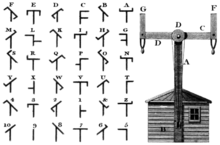Reposted from http://graydon2.dreamwidth.org/193447.html
I figured I should just post this somewhere so I can make future reference to how I feel about the matter, anytime someone asks me about such-and-such video, 3D, game or "dynamic" multimedia system. Don't get me wrong, I like me some illustrations, photos, movies and music.But text wins by a mile. Text is everything. My thoughts on this are quite absolute: text is the most powerful, useful, effective communication technology ever, period.

Text is the oldest and most stable communication technology (assuming we treat speech/signing as natural phenomenon -- there are no human societies without it -- whereas textual capability has to be transmitted, taught, acquired) and it's incredibly durable. We can read texts from five thousand years ago, almost the moment they started being produced. It's (literally) "rock solid" -- you can readily inscribe it in granite that will likely outlast the human species.

Text is the most flexible communication technology. Pictures may be worth a thousand words, when there's a picture to match what you're trying to say. But let's hit the random button on wikipedia and pick a sentence, see if you can draw a picture to convey it, mm? Here:
"Human rights are moral principles or norms that describe certain standards of human behaviour, and are regularly protected as legal rights in national and international law."
Not a chance. Text can convey ideas with a precisely controlled level of ambiguity and precision, implied context and elaborated content, unmatched by anything else. It is not a coincidence that all of literature and poetry, history and philosophy, mathematics, logic, programming and engineering rely on textual encodings for their ideas.

Text is the most efficient communication technology. By orders of magnitude. This blog post is likely to take perhaps 5000 bytes of storage, and could compress down to maybe 2000; by comparison the following 20-pixel-square image of the silhouette of a tweeting bird takes 4000 bytes:


Text is the most socially useful communication technology. It workswell in 1:1, 1:N, and M:N modes. It can be indexed and searchedefficiently, even by hand. It can be translated. It can be produced and consumed at variable speeds. It is asynchronous. It can be compared, diffed, clustered, corrected, summarized and filtered algorithmically. It permits multiparty editing. It permits branching conversations, lurking, annotation, quoting, reviewing, summarizing, structured responses, exegesis, even fan fic. The breadth, scale and depth of ways people use text is unmatched by anything. There is no equivalent in any other communication technology for the social, communicative, cognitive and reflective complexity of a library full of books or an internet full of postings. Nothing else comes close.
So this is my stance on text: always pick text first. As my old boss might have said: always bet on text. If you can use text for something, use it. It will very seldom let you down.This entry was originally posted at http://graydon2.dreamwidth.org/193447.html. Please comment there using OpenID.
 bzichett
bzichett